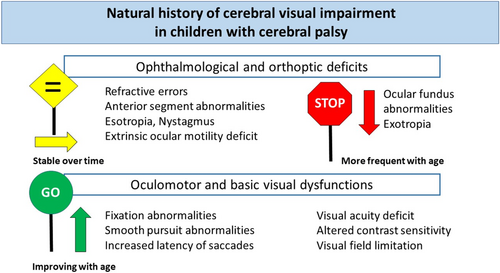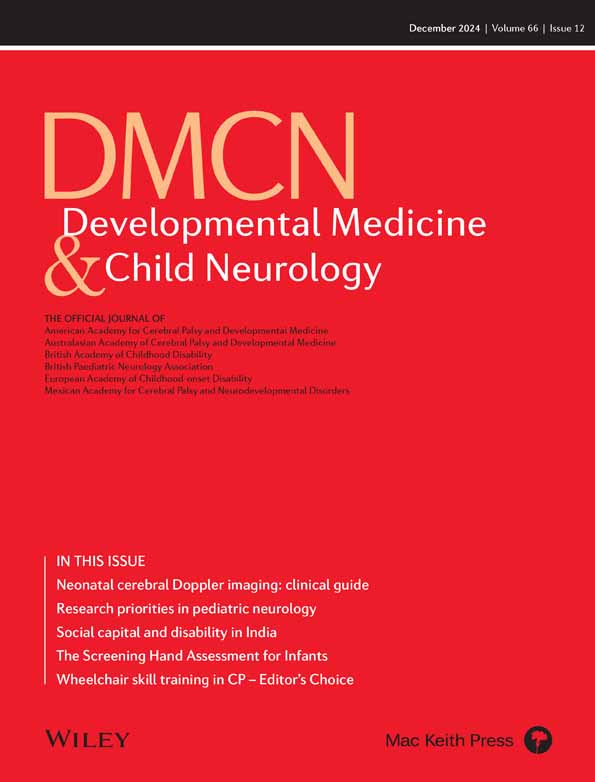Natural history of cerebral visual impairment in children with cerebral palsy
We evaluated the natural history of cerebral visual impairment (CVI) in children with cerebral palsy (CP) using a longitudinal study design. We also wanted to explore which early visual signs and symptoms were associated with cognitive visual disorders (CVDs) later at school age.
A sample of 51 participants diagnosed with CP and CVI were enrolled. They underwent a neurovisual evaluation (ophthalmological, oculomotor, and basic visual functions) at three time points: T0 (6–35 months old), T1 (3–5 years old), and T2 (≥6 years old). Children at school-age (range 72–144 months) also performed a cognitive-visual evaluation. A multidisciplinary team performed the neurovisual evaluation.
Ophthalmological deficits remained stable over time, except for ocular fundus abnormalities and strabismus whose frequencies increased with age. Conversely, fixation, smooth pursuit, and saccades deficits, as well as visual acuity, contrast sensitivity, and visual field all improved over time. Twenty children were also found to have a cognitive visual impairment at T2. The presence of early oculomotor dysfunctions appeared to be associated with CVD at school age.





